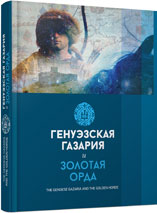Процессы урбанизации и динамика мясного потребления в средневековых городах Поволжья (по археозоологическим материалам)
Urbanization Processes and Meat Consumption Trends in Medieval Towns in the Volga Area (by archaeozoological
materials)
Author(s): Lilia V. Yavorskaya
Subject(s): History, Archaeology, Demography and human biology, Economic development, 13th to 14th Centuries
Published by: Издательский дом Stratum, Университет «Высшая антропологическая школа»
Keywords: Golden Horde; medieval town; urbanization; archaeozoological studies;meat consumption;
Summary/Abstract: The author focuses on a relation between urbanization and changes in meat consumption among the dwellers of medieval towns in the Middle and Lower Volga area. Methodology elaborated by the Institute of Archaeology of the Russian Academy of Sciences specially for palaeoeconomic reconstructions allowed conducting an archaeozoological study of animal bone collections from archaeological digs on seven urban sites (Bolgarskoe, Uvekskoe, Vodyanskoe, Tzarevskoe, Selitrennoe, Moshaik, Samosdelskoe fortified settlements) in three chronological periods: pre-Mongol, Early Golden Horde and Late Golden Horde. It was established that beef predominated in meat diet of the urban citizens in each of the three periods, followed by mutton and horse meat. Very similar spectrums of meat consumption in almost every town in the mid 14 th c., whenever it emerged or whatever its tradition of meat consumption, expressly demonstrate presence of a well planned agricultural district around them.
Book: Генуэзская Газария и Золотая Орда
- Page Range: 197-206
- Page Count: 10
- Publication Year: 2015
- Language: Russian
- Content File-PDF

